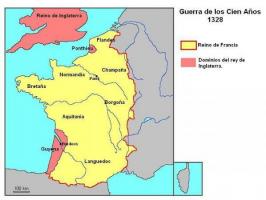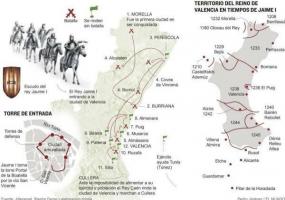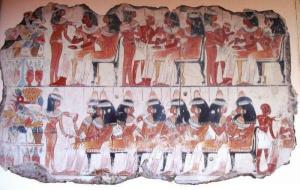Germanic invasions in the Iberian Peninsula
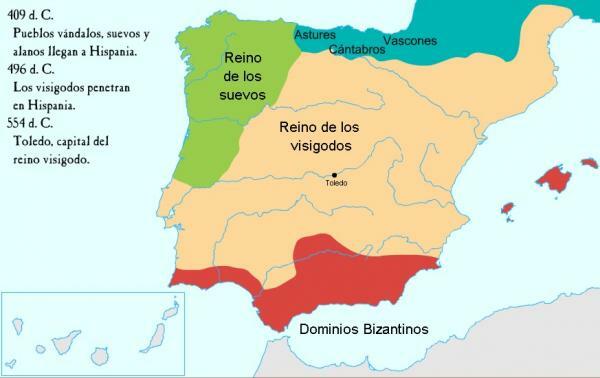
Image: estudiondosocialesestoy
The end of the Western Roman Empire came after a series of invasions of Germanic peoples In the different provinces that made it up, these actions were dismantling the imperial power to the point of making government impossible in those places. Next, in this lesson from a TEACHER, we offer you a brief summary about the Germanic invasions in the Iberian Peninsula, stopping in the different kingdoms that were formed after the entry of these peoples, the In the same way, we will observe the changes that took place both in the social model and in the economic.
Index
- The Alans in the Iberian Peninsula
- The Vandals
- The Suevi
- Social and economic relations
The Alans in the Iberian Peninsula.
In 409, the Alans people entered the Iberian Peninsula to settle in Lusitania and Carthaginian. Shortly after, in the year 412 they would conquer Emerita Augusta, where they established the court of AtaxAlthough this headquarters would not last for a long time, because in 418, the Visigoths, allies of the Roman Empire, entered the peninsula to destroy the invading peoples.
In this way, the people of the Alans were left without their leader and offered the crown of his people to the king of the vandals, Gunderico, so that the great part of the Alano people, marched with the rest of the Vandals in the year 429 to North Africa, where they would create a kingdom. The rest of Alans who did not want to leave with the rest, were settled in the lands, uniting with the local population.
Among the curiosities of the story, we must know that apparently this group was the one that introduced in Europe the modality hunting with the help of hounds, leaving a breed of dog, the Alana breed, in some areas of Castilla y León, Asturias and the Basque Country. In the same way, a part of said town along with another Visigothic group, were known as the Got-Alanien, assuring some historians the possibility that the name of Catalonia comes from there (although this is still a theory today).
The Vandals.
Also by the year 409, three Germanic peoples entered the interior of the Iberian Peninsula, one of them, the people of the Vandals, as federated of the Empire. We must mention that this group was subdivided into:
- Silingo Vandals: which were led by Fridibaldo. These would settle in Baetica, although shortly after they were defeated by the Visigoths.
- Vandals absding: They were commanded by Gunderico and at first they settled in Gallaecia, Asturica and Clunia, to later go down progressively until they reached North Africa.
The vandals they soon turned their backs on Rome, because in the year 425 I ended up devastating Carthage Nova and in 436 conquering Hispalis.
Already with the reign of Genseric, the vandals decided to march to North Africa, to end one of the most important agricultural areas of the Empire. Thus, through the area of the strait, more than fifteen thousand men were crossing to the towns of Tangier and Melilla in the year 429.
In their search for riches, they would go to proconsular Africa, whose capital was Carthage, which was their capital after the conquest. In this way, the vandals began to trade with Rome to sell them the grain, which had previously belonged to them, in the same way and already controlling naval techniques, they engaged in piracy in the Mediterranean. In the year 534, General Belisarius, defeated the Vandal kingdom forever, reconquering North Africa for the Byzantine emperor.
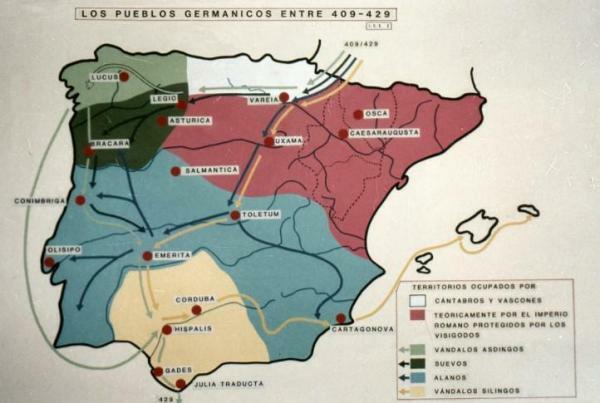
Image: IES Carbula
The Suevi.
The Suebi entered at the same time as the previous groups and were commanded by Hermerico, these soon came into contact with the absdingos in Gallaecia, forcing them to descend on the peninsula. They made Braga, their capital, although later they would even have their court in Emerita Augusta.
Another of its main venues was Lugo. What we must emphasize is that, during their stay as an independent kingdom, they almost always dominated the same territory, the north of the peninsula, descending through the west of the peninsula to somewhat below the city of Coimbra.
This kingdom lasted between 409 and 585, year by which Leovigildo finished with his king and incorporated the Swabian kingdom to the Visigothic kingdom of Toledo.
Social and economic relations.
One of the most studied aspects throughout history in all parts of the world is usually the interaction of indigenous populations with invaders. In this case, the The problematic of the Arian heresy made the union of the Germanic peoples impossiblewith the Hispanic population.
This fact, made that in principle the relations were very few between both peoples, the Hispanics They had to obey the new orders imposed by the new elite, due to the large number of soldiers there was. Little by little, however, we will find the union between the elites, in order to make sure that they would maintain the privileges that they had until then.
In the economic sphere, a part of the lands was handed over to these groups, most of them belonging to the Empire, although on some occasions they were entering into hospitalitas, a technique whereby a part of a private property was "given" to a new owner so that it could be installed and maintained.
Being quite closed groups, they settled in the most important cities, in which only the elite settled of these groups, leaving the outskirts of the cities, for the rest of the town, one of the best known examples in Spain are the Gothic Fields.
If you want to read more articles similar to Germanic invasions in the Iberian Peninsula, we recommend that you enter our category of Story.

